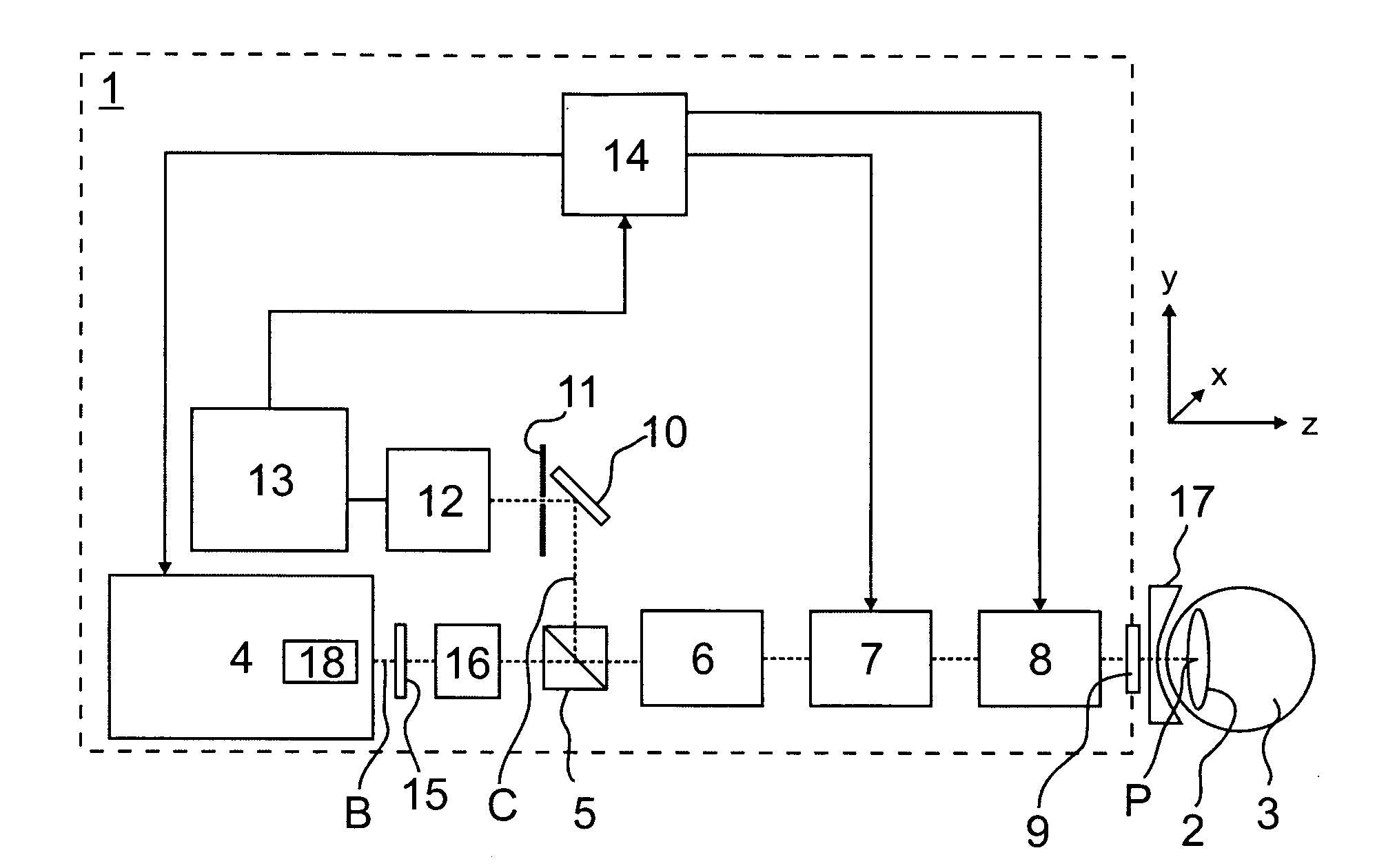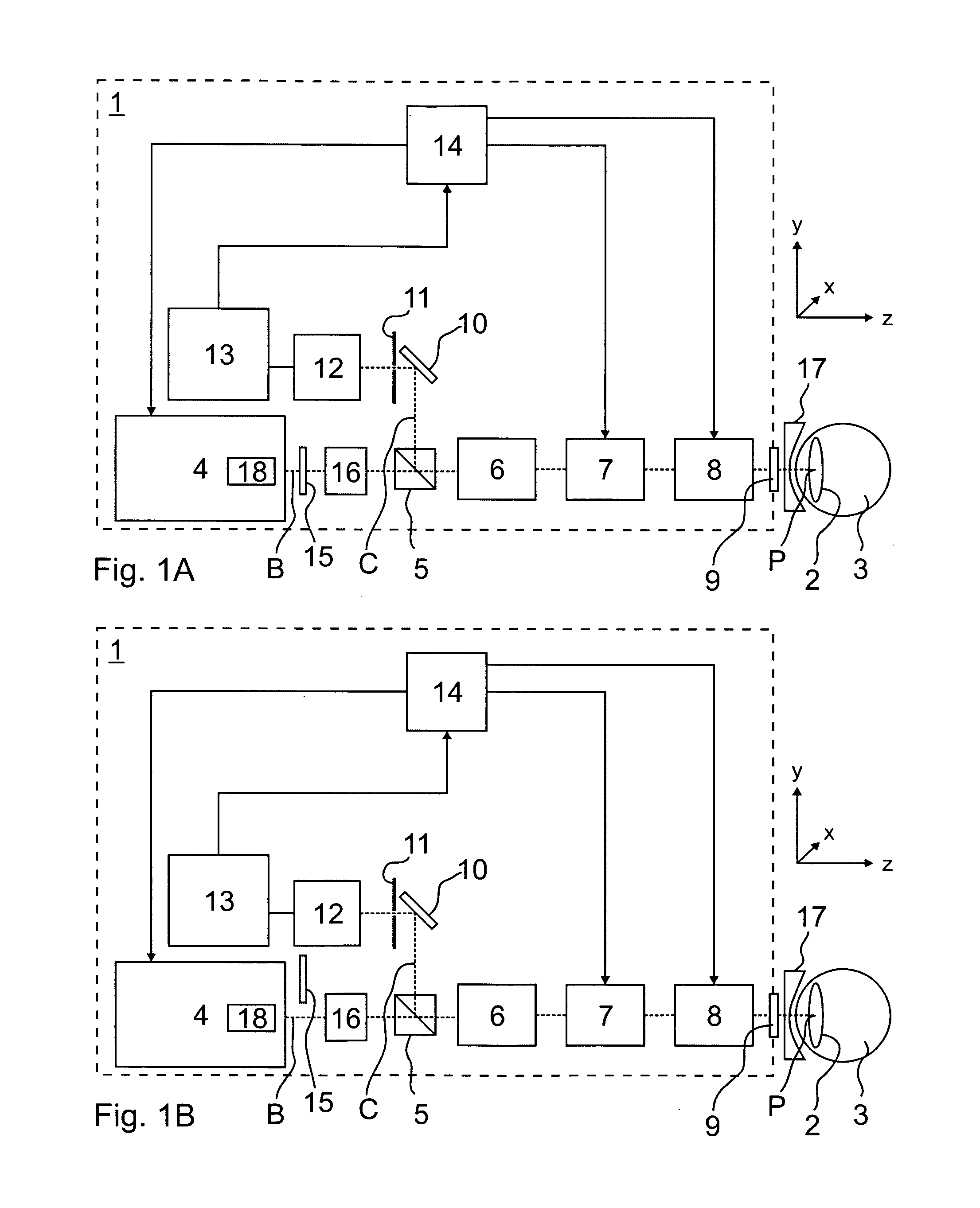Ophthalmologic laser system
a laser system and laser technology, applied in the field of ophthalmological laser systems, can solve problems such as visual perception impairment, and achieve the effects of reducing radiation exposure, short time period, and great accuracy of irradiation
- Summary
- Abstract
- Description
- Claims
- Application Information
AI Technical Summary
Benefits of technology
Problems solved by technology
Method used
Image
Examples
Embodiment Construction
[0056]FIG. 1 shows an exemplary ophthalmological laser system 1 for combined analysis and therapy of a presbyopia of a crystalline lens 2 of an eye 3. According to the invention, this system also allows for treatment of the cornea (not depicted) of the eye 3. In the illumination beam path B, the laser system 1 exhibits a laser 4, a polarization beam splitter 5, scan optics 6, a scanner unit 7, focusing optics 8, and an optical phase retardation system 9; a deflection mirror 10, a confocal aperture diaphragm 11, and a detector 12, which form a decoupled detection beam path C; and an amplifier 13 and a control unit 14. In addition, a modulator 16, e.g., an acousto-optical modulator (AOM, AOTF), is provided in the illumination beam path. A contact glass 17 with an immobilization device for the eye 3 is arranged between the laser system 1 and the eye 3 and behind which is the examination region. Other embodiments for the realization of the solution, according to the invention, are possi...
PUM
 Login to View More
Login to View More Abstract
Description
Claims
Application Information
 Login to View More
Login to View More - R&D
- Intellectual Property
- Life Sciences
- Materials
- Tech Scout
- Unparalleled Data Quality
- Higher Quality Content
- 60% Fewer Hallucinations
Browse by: Latest US Patents, China's latest patents, Technical Efficacy Thesaurus, Application Domain, Technology Topic, Popular Technical Reports.
© 2025 PatSnap. All rights reserved.Legal|Privacy policy|Modern Slavery Act Transparency Statement|Sitemap|About US| Contact US: help@patsnap.com



